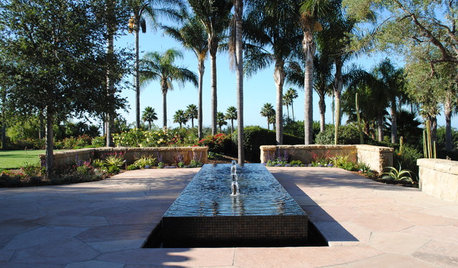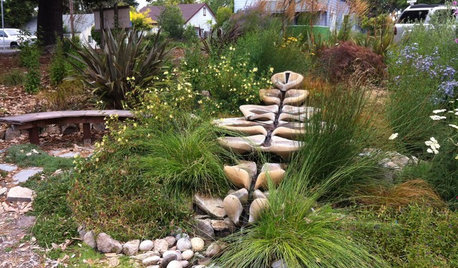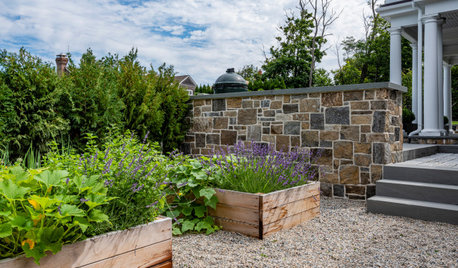Watering sentitive plants with tap water.
orchidnick
11 years ago
Related Stories

GARDENING AND LANDSCAPINGGardens Tap Into Rill Water Features
Rooted in ancient design, this water feature is popular again as a way to help contemporary landscapes flow
Full Story
LANDSCAPE DESIGNNew Ways to Design With Water
Go beyond 3-tiered fountains and faux waterfalls to discover water's architectural possibilities
Full Story
SAVING WATER11 Ways to Save Water at Home
Whether you live in a drought-stricken area or just want to help preserve a precious resource, here are things you can do to use less water
Full Story
SAVING WATERXeriscape Gardens: How to Get a Beautiful Landscape With Less Water
Conserve water and make gardening much easier with the xeriscape approach’s 7 principles
Full Story
GARDENING GUIDES9 Ways to Be Water-Wise in the Edible Garden
Consider these tips to get a healthy backyard crop that uses less water
Full Story
GREEN BUILDINGJust Add Water: Rain Barrel Magic
Take your rainwater storage from practical to beautiful with a new breed of design-friendly rain barrels
Full Story
GREEN DECORATINGEasy Green: Big and Small Ways to Be More Water-Wise at Home
These 20 tips can help us all make the best use of a precious resource. How do you save water in summer?
Full Story
GARDENING GUIDESEssential Watering Tips for Your Edible Garden
To give your edible plants just what they need, check out these guidelines for how, when and how much to water
Full Story
LIFEThe Top 5 Ways to Save Water at Home
Get on the fast track to preserving a valuable resource and saving money too with these smart, effective strategies
Full Story
HEALTHY HOMEHow to Choose a Home Water Filtering System
Learn which water purification method is best for your house, from pitchers to whole-house setups
Full Story







Darlene (GreenCurls)
orchidnickOriginal Author
Related Professionals
Wrentham Landscape Architects & Landscape Designers · Palos Verdes Estates Landscape Contractors · Richmond Landscape Contractors · Rosemount Landscape Contractors · Weslaco Landscape Contractors · Salem General Contractors · Albany General Contractors · Ashtabula General Contractors · Davidson General Contractors · East Riverdale General Contractors · Hamilton Square General Contractors · Merritt Island General Contractors · Middletown General Contractors · Milton General Contractors · Stoughton General ContractorsthedogsLL
orchidnickOriginal Author
thedogsLL
westoh Z6
orchidnickOriginal Author
vtandrea
orchidnickOriginal Author
thedogsLL
jane__ny
thedogsLL
garyfla_gw
garyfla_gw
orchidnickOriginal Author
jane__ny
orchidnickOriginal Author
jane__ny
arthurm
orchidnickOriginal Author
garyfla_gw
meyermike_1micha
terpguy
jane__ny